Showing Spotlights 665 - 672 of 2780 in category All (newest first):
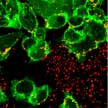 Scientists report an innovative nanotechnological approach for inhibiting the proliferation of breast cancer cells. For the first time, a wireless treatment based on piezoelectric nanoparticles has been exploited to remotely deliver electric stimulations to breast cancer cells. The team shows that chronic electric stimulations mediated by piezoelectric nanoparticles result in the ability to significantly reduce the breast cancer cell proliferation by affecting the ion homeostasis and the organization of the mitotic spindles during cell division.
Scientists report an innovative nanotechnological approach for inhibiting the proliferation of breast cancer cells. For the first time, a wireless treatment based on piezoelectric nanoparticles has been exploited to remotely deliver electric stimulations to breast cancer cells. The team shows that chronic electric stimulations mediated by piezoelectric nanoparticles result in the ability to significantly reduce the breast cancer cell proliferation by affecting the ion homeostasis and the organization of the mitotic spindles during cell division.
May 2nd, 2018
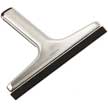 By precisely stacking various 2D materials in a predetermined sequence on top of each other, researchers create van der Waals heterostructures that, due to their unique interlayer coupling, have special optoelectronic properties. Unfortunately, the study of 2D monolayers is plagued by trapped contaminants in between the 2D sheets as well as between the 2D sheets and the underlying substrate. These contaminants make it difficult to obtain precise and reproducible experimental observations. A simple technique for removing these contaminants in a process similar to a squeegee.
By precisely stacking various 2D materials in a predetermined sequence on top of each other, researchers create van der Waals heterostructures that, due to their unique interlayer coupling, have special optoelectronic properties. Unfortunately, the study of 2D monolayers is plagued by trapped contaminants in between the 2D sheets as well as between the 2D sheets and the underlying substrate. These contaminants make it difficult to obtain precise and reproducible experimental observations. A simple technique for removing these contaminants in a process similar to a squeegee.
May 1st, 2018
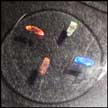 Researchers report a new a method to produce optical nanostructures on commercial contact lenses. This method aids in functionalizing and nanotexturing an of the shelf, commercial contact lens. This adds to the trend of the humble contact lens, widely used to correct common vision problems, being on its way to become a 'smart' diagnostic tool. Tears contain diagnostic information regarding ocular diseases, and they can be used as a surrogate medium for analyzing blood chemistry.
Researchers report a new a method to produce optical nanostructures on commercial contact lenses. This method aids in functionalizing and nanotexturing an of the shelf, commercial contact lens. This adds to the trend of the humble contact lens, widely used to correct common vision problems, being on its way to become a 'smart' diagnostic tool. Tears contain diagnostic information regarding ocular diseases, and they can be used as a surrogate medium for analyzing blood chemistry.
Apr 30th, 2018
 One of the main challenges for energy efficient technologies is to lower their cost by making cheap energy-efficient materials and devices by preferably using green manufacturing technologies. For example, commercial infrared-blocking windows, both passive and active, are simply too expensive (most of these IR-blocking windows contain an expensive silver coating) and they are not used in the majority of our homes. One approach to this problem involves creating passive infrared-blocking glasses using plasmonic nanocrystals. Researchers have demonstrated that nanocrystals of relatively inexpensive plasmonic materials show an overall good performance as IR-blocking elements.
One of the main challenges for energy efficient technologies is to lower their cost by making cheap energy-efficient materials and devices by preferably using green manufacturing technologies. For example, commercial infrared-blocking windows, both passive and active, are simply too expensive (most of these IR-blocking windows contain an expensive silver coating) and they are not used in the majority of our homes. One approach to this problem involves creating passive infrared-blocking glasses using plasmonic nanocrystals. Researchers have demonstrated that nanocrystals of relatively inexpensive plasmonic materials show an overall good performance as IR-blocking elements.
Apr 27th, 2018
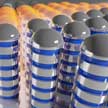 Well-defined complex nanostructures for metamaterials with unique optical properties - such as negative refractive index, strong artificial optical activity and perfect absorption - are usually prepared by top-down approaches, including direct laser writing, multiple e-beam lithography, and membrane projection lithography. In a recent breakthrough, scientists have combined block copolymer self-assembly and an anodized aluminum oxide template to fabricate unique complex nanostructures over a large (centimeter) area.
Well-defined complex nanostructures for metamaterials with unique optical properties - such as negative refractive index, strong artificial optical activity and perfect absorption - are usually prepared by top-down approaches, including direct laser writing, multiple e-beam lithography, and membrane projection lithography. In a recent breakthrough, scientists have combined block copolymer self-assembly and an anodized aluminum oxide template to fabricate unique complex nanostructures over a large (centimeter) area.
Apr 26th, 2018
 Carbon nanomaterials, including graphene-based materials, are widely gaining popularity in practical applications of nanomanufacturing. As a result, it becomes more and more likely that the unwanted introduction of such materials into the environment may occur. In particular, aqueous habitats might be severely affected by any accidental carbon nanomaterials exposure. Researching these potential environmental toxicity effects, scientists have found that kaolin, a cheap and abundant clay, can act as a powerful antidote to remediate the toxic effects of graphene oxide.
Carbon nanomaterials, including graphene-based materials, are widely gaining popularity in practical applications of nanomanufacturing. As a result, it becomes more and more likely that the unwanted introduction of such materials into the environment may occur. In particular, aqueous habitats might be severely affected by any accidental carbon nanomaterials exposure. Researching these potential environmental toxicity effects, scientists have found that kaolin, a cheap and abundant clay, can act as a powerful antidote to remediate the toxic effects of graphene oxide.
Apr 25th, 2018
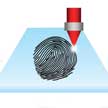 Creating smart superhydrophobic (i.e. extremely water-repellent) surfaces is of increasing importance in cutting-edge applications such as self-cleaning, anti freezing, anticorrosion, anti biofouling, water/oil separation, and microfluidics. Researchers now managed to demonstrate a skin-like superhydrophobic surface, which can be switched into different wetting properties by simple body motion. This active surface enables on-demand manipulation of water droplets without energy supply or external appliance.
Creating smart superhydrophobic (i.e. extremely water-repellent) surfaces is of increasing importance in cutting-edge applications such as self-cleaning, anti freezing, anticorrosion, anti biofouling, water/oil separation, and microfluidics. Researchers now managed to demonstrate a skin-like superhydrophobic surface, which can be switched into different wetting properties by simple body motion. This active surface enables on-demand manipulation of water droplets without energy supply or external appliance.
Apr 24th, 2018
 A triboelectric nanogenerator (TENG) utilizes charges arising from friction similar to the static we experience on dry winter days; and by nanostructuring the materials in a TENG device, the produced energy could be amplified by increasing the contact area of the surfaces. In a step toward the commercialization of triboelectric nanogenerator (TENG) devices, researchers have presented a novel approach that uses TENG technology to develop battery-free, self-powered electronic toys.
A triboelectric nanogenerator (TENG) utilizes charges arising from friction similar to the static we experience on dry winter days; and by nanostructuring the materials in a TENG device, the produced energy could be amplified by increasing the contact area of the surfaces. In a step toward the commercialization of triboelectric nanogenerator (TENG) devices, researchers have presented a novel approach that uses TENG technology to develop battery-free, self-powered electronic toys.
Apr 23rd, 2018
 Scientists report an innovative nanotechnological approach for inhibiting the proliferation of breast cancer cells. For the first time, a wireless treatment based on piezoelectric nanoparticles has been exploited to remotely deliver electric stimulations to breast cancer cells. The team shows that chronic electric stimulations mediated by piezoelectric nanoparticles result in the ability to significantly reduce the breast cancer cell proliferation by affecting the ion homeostasis and the organization of the mitotic spindles during cell division.
Scientists report an innovative nanotechnological approach for inhibiting the proliferation of breast cancer cells. For the first time, a wireless treatment based on piezoelectric nanoparticles has been exploited to remotely deliver electric stimulations to breast cancer cells. The team shows that chronic electric stimulations mediated by piezoelectric nanoparticles result in the ability to significantly reduce the breast cancer cell proliferation by affecting the ion homeostasis and the organization of the mitotic spindles during cell division.
 Subscribe to our Nanotechnology Spotlight feed
Subscribe to our Nanotechnology Spotlight feed





